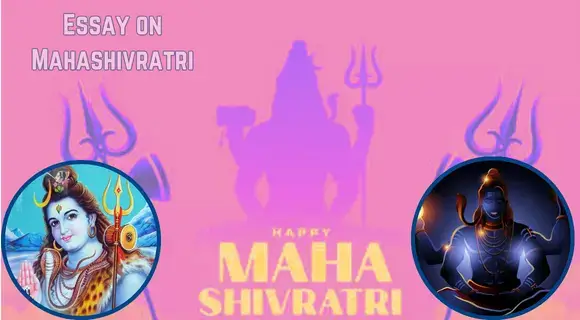Maha Shivratri is a one of the most important festival for Hindus and it happens every year on the fourteenth day of the dark fortnight in the Hindu month of Phalguna, which usually falls in February or March. This festival is a big celebration that honors Lord Shiva, who is one of the main gods in Hinduism. It’s a time for people to reflect on their spirituality and seek the blessings of Lord Shiva.
The Meaning of Maha Shivratri
Maha Shivratri is not just a festival; it’s also full of stories and symbols with deep meanings. Here are some of the stories that are often talked about during this festival:
The Marriage of Shiva and Parvati: One popular story is about the marriage of Lord Shiva and Parvati. It’s believed that they got married on the night of Maha Shivratri. This marriage represents the union of two important aspects: consciousness (Shiva) and power (shakti).
The Samudra Manthan: Another story is about the churning of the cosmic ocean by the gods and demons to find the elixir of immortality. During this churning, a deadly poison came out, which could have destroyed the world. Lord Shiva drank this poison to save the world, turning his throat blue in the process.
The Overcoming of Ignorance: Some people see Maha Shivratri as a symbol of overcoming ignorance with spiritual knowledge. Just like how Lord Shiva defeated ignorance represented by Andhakasura, people try to overcome their inner demons and gain spiritual enlightenment during this time.
How Maha Shivratri is Celebrated
Maha Shivratri is celebrated with a lot of devotion and tradition across India and in Hindu communities around the world. Here are some of the important rituals and traditions:
Fasting: Many people fast on Maha Shivratri, abstaining from food and water for the whole day. This is a way to show self-discipline and dedication to Lord Shiva.
Worship and Offerings: Throughout the day, people visit temples dedicated to Lord Shiva. They offer prayers, chants, and sacred items like bael leaves, fruits, flowers, and milk. A special ritual bath called abhishekam is performed on the Shiva linga, which represents Lord Shiva.
Jagran (Night Vigil): During the night, people stay awake in prayer, chanting hymns, and singing devotional songs. This time of spiritual reflection allows people to seek the blessings of Lord Shiva and think about their spiritual journey.
The Symbolic Meaning of Maha Shivratri
Maha Shivratri is not just about religious rituals; it also carries deep symbolic meanings:
Celebrating Creation and Destruction: Lord Shiva is often called the “Destroyer” in Hinduism, but he also represents creation and renewal. Maha Shivratri reminds us of the cycle of life, where things are constantly changing.
Overcoming Darkness and Ignorance: This festival symbolizes the victory of light over darkness, both literally and metaphorically. By staying awake and engaging in spiritual practices, people seek knowledge and wisdom to overcome ignorance.
Seeking Inner Peace and Harmony: Through fasting, prayers, and introspection, people aim to find inner peace and balance. This reflects the ultimate goal of spiritual growth and enlightenment.
In Conclusion
Maha Shivratri is more than just a religious festival; it’s a time for people to reflect on their spirituality and seek inner peace. As people celebrate this festival around the world, they carry forward the values of devotion, self-discipline, and spiritual growth that Maha Shivratri teaches.
